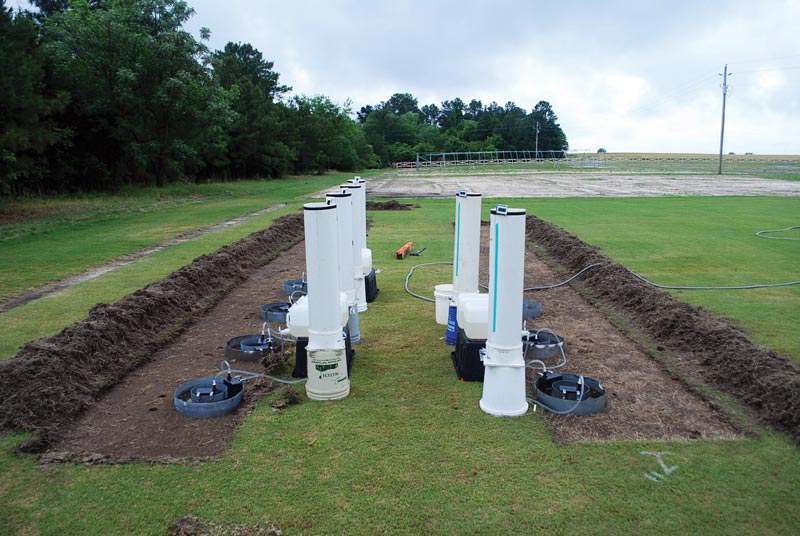
Photo by Drew Pinnix
Fraze mowers are aggressive, tractor-mounted implements that can remove plant and soil material from depths of 0 to 2 inches (5 centimeters). Compaction from routine traffic in turfgrass systems is usually confined to the surface 3 inches (7.6 centimeters) of the soil profile, which overlaps with fraze mower functional depths.
This study was conducted to evaluate fraze mowing as a viable cultivation method to remove surface compaction beneath Tifway hybrid bermudagrass.
A trial was conducted in 2018 on a sandy soil in Jackson Springs, N.C. Plots were subjected to increasing levels of simulated traffic (0 passes = untreated; 20 passes = 40 American football games; 30 passes = 60 games) with a modified Baldree traffic simulator. All plots were then fraze-mowed at depths of 1 or 2 inches (2.5 or 5 centimeters), and measurements were made following traffic simulation and fraze mowing.
Soil hardness increased with the number of simulated football games. All traffic levels had similar soil hardness values after fraze mowing. Trafficked treatments (20 and 30 passes) had lower soil hardness values after fraze mowing, and non-trafficked control treatments had a 29% increase in soil hardness after fraze mowing. However, volumetric water content was 43% less at sampling after fraze mowing, which may have increased non-trafficked control soil hardness values. Saturated hydraulic conductivity (Ksat) decreased 32% after fraze mowing at the 1-inch depth and remained static at the 2-inch depth (2.2 inches or 5.6 centimeters/hour) after fraze mowing.
Lower soil hardness values following fraze mowing in trafficked plots indicate the potential for compaction relief. However, lower Ksat rates at 1-inch fraze mowing depth may indicate potential soil crusting. This study is being repeated in 2019.
— Raymond McCauley; Grady L. Miller, Ph.D.; and Drew Pinnix, North Carolina State University, Raleigh, N.C.
Editor’s note: An earlier version of this summary was published in the 2018 ASA-CSSA Meeting Abstracts, ASA and CSSA, Madison, Wis.
Teresa Carson is GCM’s science editor.